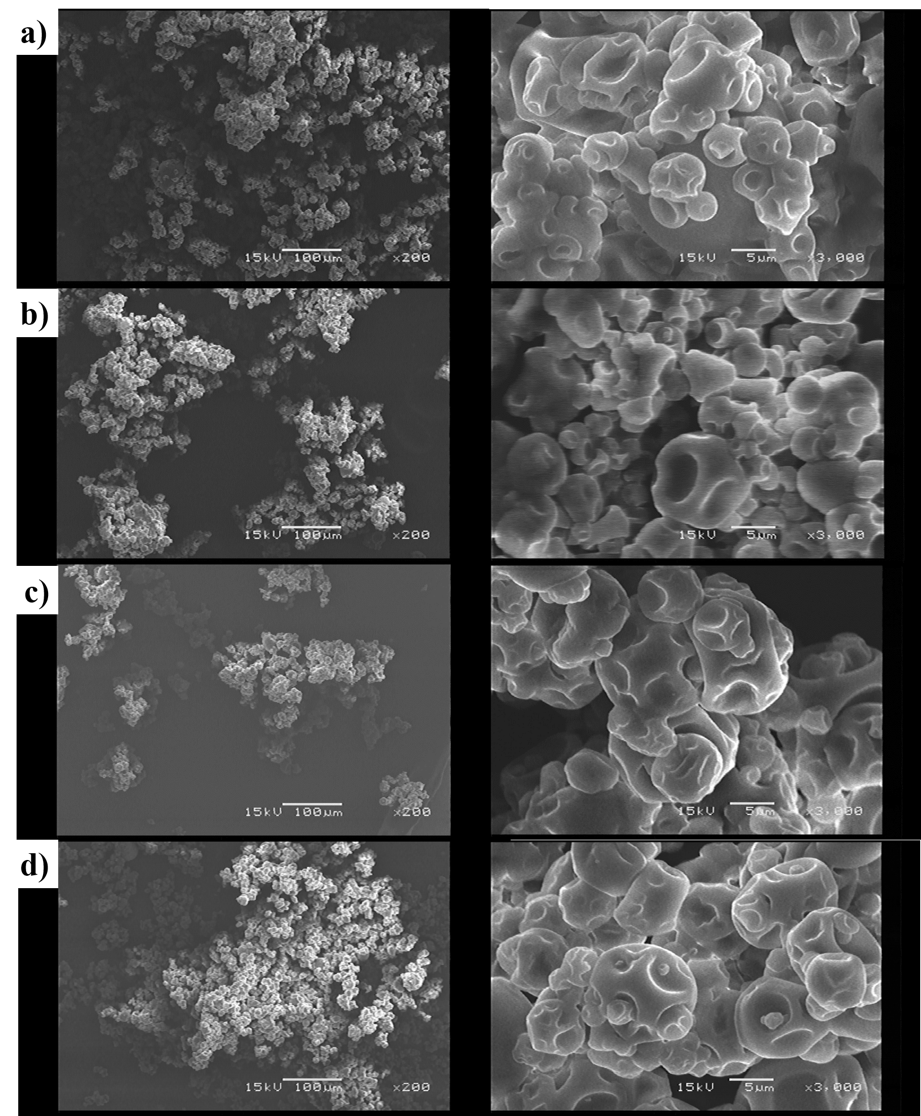 |
|
Microencapsulation of natural biocompounds is a growing field leading to its incorporation into food formulations. The use of vegetable oils as alternative solvents to extract biocompounds is considered a green process. Although avocado leaves are underexploited they are still rich in naturally-occuring biocompounds. Therefore, we propose the use of edible vegetable oils as green solvents to extract biocompounds from avocado leaves and preserve them by means of spray-drying microencapsulation. Spray drying allowed an encapsulation efficiency of 50% of the avocado leaves pigments extracted with edible oils. The emulsions prepared were heterogeneous and with low cohesiveness which was observed through de polidispersity index (0.52 - 0.87) and the Z-potential (-35.9 to -38.0) respectively. Microcapsules Haussner ratio values (1.49 – 1.61) showed the cohesiveness of the powders, this was confirmed by microscopy techniques, obtaining high particles area values (177.4 – 4460.5 µm2). Corn oil extracts showed higher carotenoids (>10%), chlorophyll a (approximately 5%) and chlorophyll b (>40%) content as compared with safflower oil extracts. However, the higher hygroscopicity values of the corn oil microcapsules (15.70 – 18.34 g water/ 100 g dry capsules) caused changes in their appearance turning its color from white to pale yellow.
Keywords: avocado leaves, oily extracts, spray drying, microencapsulation, antioxidants.
|
|
 |

